It’s (not) a Furphy
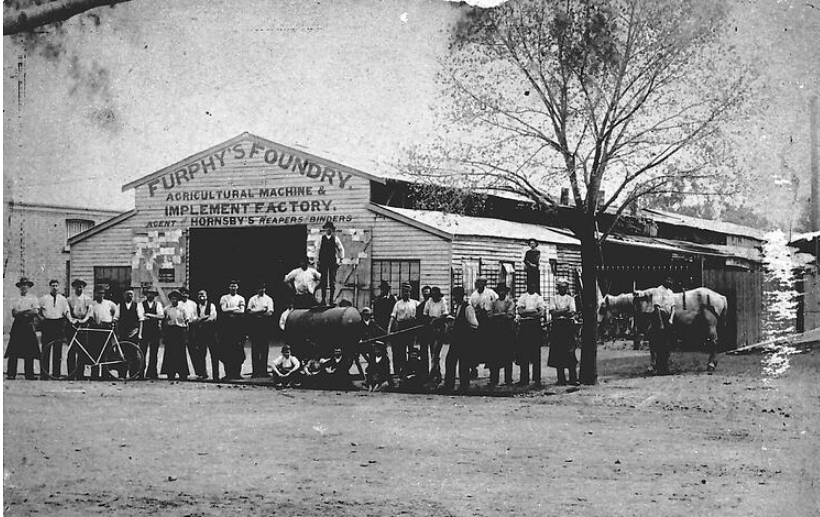
From Waler Data Base @ FaceBook. Image: Workers in front of Furphy ‘s Foundry. There is a Furphy water cart in front of the workers. Wyndham Street, Shepparton, Victoria, Australia, 1895. Creator, Clark Bros Studio, 1895. Museums Victoria.
Furphy, Shepparton, Victoria. Laughton, Adelaide, South Australia. Sunshine, Melbourne, Victoria. The horse drawn water tank and our soldiers of WW1 are intrinsically connected…
The furphy was a lovely strong water tank designed by Joseph Furphy. It could be pulled by a single horse and became very popular.
Joseph bought 10 acres at Shepparton in 1873. He started up as a blacksmith and wheelwright. In 1878 he added a steam machine and furnace – starting a foundry – and that year produced his first water cart, with Furphy simply stamped on it. The inscription was added to over the years, and in 1895 the famous “Good Better Best” poem added, and the names of other things they made. It was 180 gallons (820 litres) – lighter than existing water carts. The tank was well balanced over the axle, the wheels 30 inch (76 cm) cast iron. Empty or full, it was a well-balanced load for a horse. Joseph’s wheel making came in handy as he used the fitting method of shrinking iron onto a wooden wheel, to put the iron band on the end of the castings.
A furphy water cart constructed by J. Furphy & sons, Shepparton Vic. Circa 1905, Museums Victoria
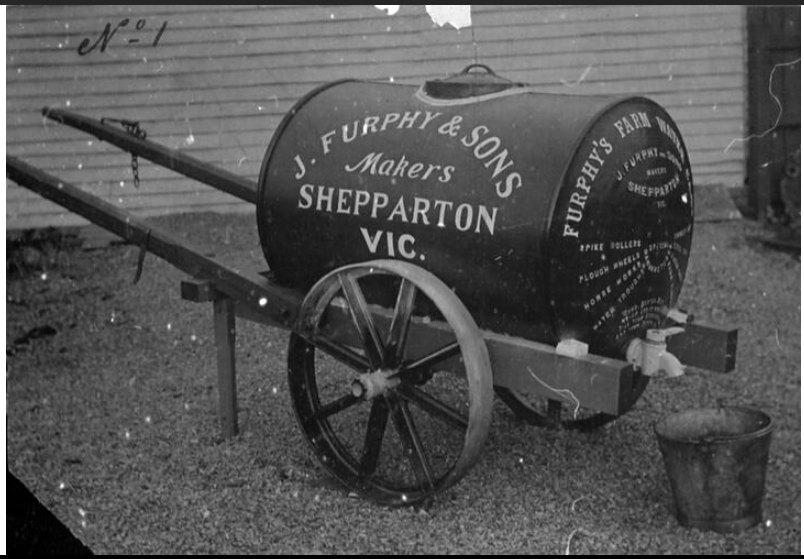
In 1906 the factory moved. Joseph moved away and left the foundry to his three sons to run, which they did well. Various other sayings were added, some urging to drink water not alcohol. In 1978 the factory moved again, still in the Shepparton area.
In WW1, Australian soldiers, particularly in the hot dry Middle East, like to gather around the “furphy” (as they called their water tanks although none were real Furphys) and tell yarns while having a cool drink. Furphy had become a generic term for water tank although none with the soldiers overseas were real Furphys as they were actually made by other companies.
These yarns were real beauties – which led to “a furphy” being a term for untrue!

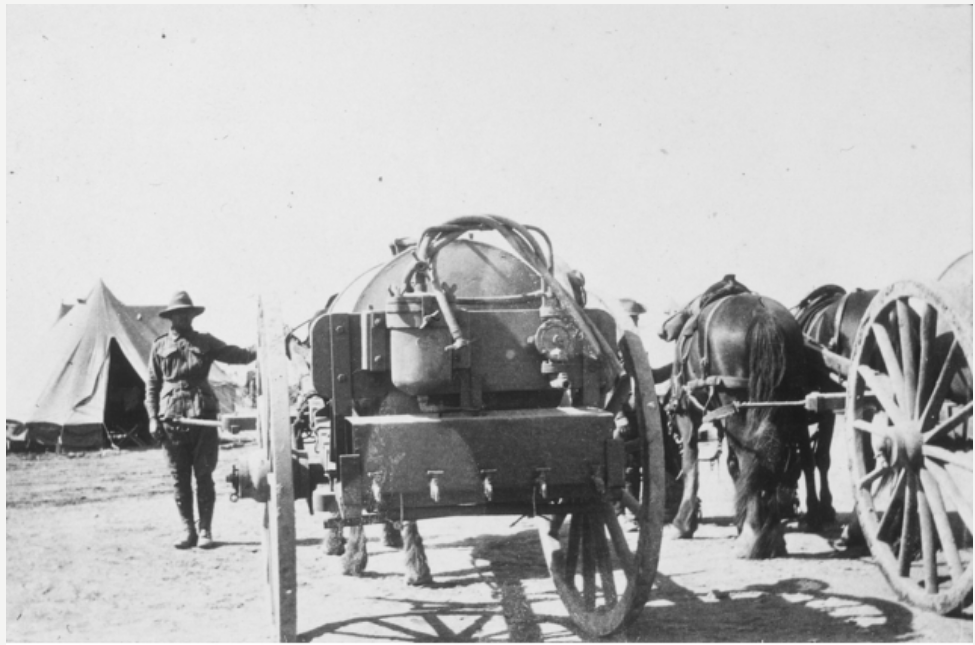
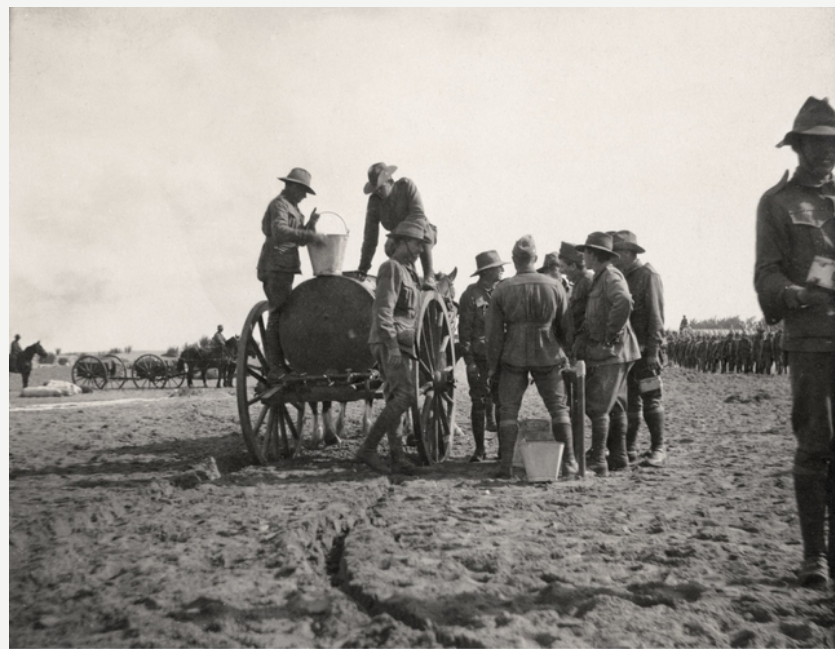
Images left to right:
Men demonstrating the Furphy’s water cart, used for fighting bushfires, Shepparton, 1900. Museums Victoria
Egypt, 1915. A horse-drawn water cart (tank) mark II (commonly known as a Furphy, after the Australian version manufactured in Ballarat) at a 1st AIF encampment. A second cart pulled by two draught horses is partly visible at right. Lemnos, Greece. AWM
Water cart, Mena. WW1. AWM
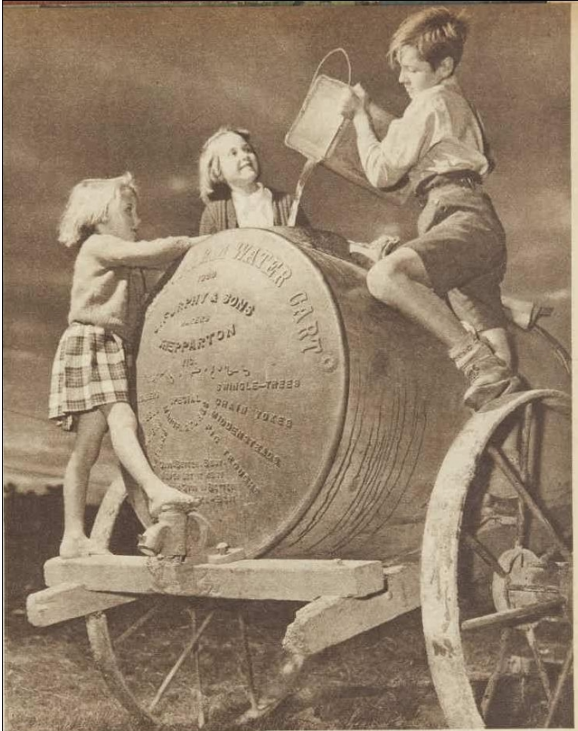
Joseph Furphy, born in Melbourne in 1842, himself told a great tale and contributed to this folklore. Writing under the pen-name of Tom Collins, he wrote a best selling book called “Such Is Life” and also wrote for the Bulletin for years as Tom Collins. He wrote from an Australian point of view, not English, which people appreciated.
Joseph and his sons loved a good joke too, and some homely philosophies were cast into the back of the furphy carts to bring a smile to those who saw them…
“Good better best
Never let it rest
Until your good is better
And your better best”
is the best known of their furphy tank castings.
Every day after school, three of the Hann children of Gumly Gumly hitched their horses to the furphy and took it to the neighbour’s well for water. There were eleven children in the family and they used a lot of water. They were going to sell the tank once pipes ran water to their house. Women’s Weekly, 20th June 1951
Joseph passed away in 1920. The furphy factory is still going strong, a real Australian institution. And that’s no furphy! ha